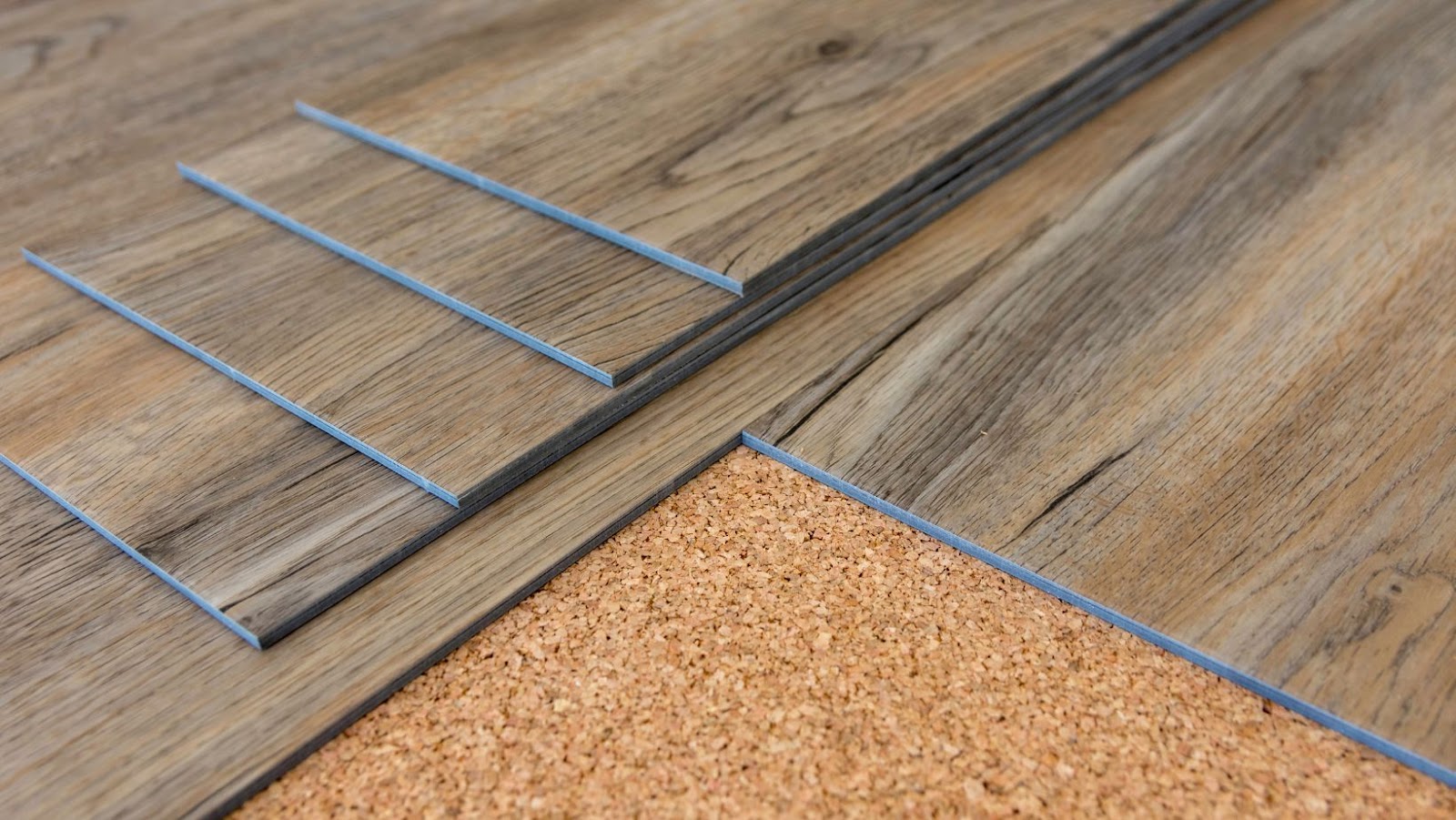Which way should vinyl plank flooring run
Selecting the direction in which to run your vinyl plank flooring is a critical decision in any home remodeling project. Taking into account both visual appeal and practical concerns can help you choose the best option for your space. While there are many factors to consider, this guide will provide an overview of the key elements to keep in mind when deciding which way you want your vinyl plank flooring to run.
From room shape to furniture placement and traffic flow, following these steps will help you make an informed and stylish decision about running your vinyl planks:
- Consider the shape of the room.
- Think about the furniture placement.
- Think about the traffic flow.
- Make sure to take into account any existing flooring.
Factors to Consider when Deciding which way to Run Vinyl Plank Flooring
When choosing which way to run your vinyl plank flooring, there are many factors to consider. These include:
- the shape and size of the room
- the direction of natural light
- the layout of the furniture
- the overall layout of the home.
All of these factors can help you decide which way to run the flooring for the best look. Additionally, there are certain practical considerations to keep in mind when deciding which way to run your vinyl plank flooring.
Room Layout
When considering which way to run your vinyl plank flooring, you should take into account the layout of your room. Depending on how the room is laid out, you may want to install the planks in a particular direction. For instance, it is best to lay planks parallel to natural light sources such as windows and doors since this will add depth and brightness to your space.
If the furniture in a room is set up in a particular way, then it may be better to follow that layout when installing with vinyl plank flooring. Additionally, you should also consider any existing floor patterns in adjoining rooms when deciding which direction to install your planks.
By taking into account all of these factors, you can ensure that your vinyl plank flooring will look its best when installed:
- Lay planks parallel to natural light sources such as windows and doors.
- Follow the furniture layout in the room.
- Consider any existing floor patterns in adjoining rooms.
Lighting
When deciding which way to run your vinyl plank flooring, the natural lighting in the space should be taken into consideration. Natural daylight can cast shadows which can create a striped effect that shows direction, so running it in the same direction as that of the incoming light will reduce this effect.
If your room is bright on one side and darker on another, consider running it perpendicular to that so that no one look overpowers the other; this will provide balance throughout the room.
If possible, try laying down a few pieces of planks each way and check it in natural lighting to see what works best for you:
- Run it in the same direction as the incoming light.
- Run it perpendicular to the light.
Room Proportions
When deciding which way to run your vinyl plank flooring, you should take into consideration the size and shape of the room. If the room is small, or has an awkward shape, it could be beneficial to lay the boards lengthwise. This will give the illusion of a larger space and will draw your eye along the length of the boards creating a unified look in what may otherwise be an awkward and disjointed space.
On the other hand, if you’re dealing with a larger area with more even proportions, laying them width-wise will make it feel more comfortable as it won’t draw attention from all corners. Different types of finishes can also be achieved depending on what direction you orientate your planks in, so take this into consideration if one type of finish appeals to you more than another.
Foot Traffic
When deciding which way to run your vinyl plank flooring, one factor that should be considered is foot traffic. Depending on the direction of foot traffic, some sections of the room may wear down much quicker than others, resulting in unevenness in flooring appearance. Therefore, it’s important to take into account how much foot traffic flows across each point of the room when determining which direction to run the planks.
Generally speaking, it’s better for your vinyl plank flooring to flow with the direction of foot traffic so more wear is distributed evenly across your entire floor space rather than concentrated in a single area.
Tips for Installing Vinyl Plank Flooring
When it comes to installing vinyl plank flooring, it’s important to ensure you lay it in the right direction in order to get the best results. Knowing which way to run your vinyl plank flooring can be a challenge, but there are a few tips and tricks that can help.
This article will provide helpful advice on how to decide which way to run your vinyl plank flooring for the best results:
Measure the Room
Before deciding which way to run your vinyl plank flooring, you need to accurately measure the room in which you will be installing it. For example, if an area is wider than it is long, you may want to run the planks parallel with the walls as this orientation will enhance the appearance of linear openness. On the other hand, if an area is longer than it is wide, running the planks perpendicular to the walls can be a great option as this orientation can sometimes make a space appear smaller.
If there are features such as fireplaces or fixed furniture that need to be taken into consideration during installation then you should consider these points when deciding which direction your planks should run. Whichever direction you decide upon should not conflict with these items and should take these into account.
When measuring your room for floor installation, it’s important that you remember to include doorways or other transitions (such as thresholds) in your measurements and calculations. This information can later help with calculating how much vinyl plank material needs to be purchased in order for your project to proceed without interruption!
Choose the Direction of the Planks
When installing your vinyl plank flooring, one of the most important things to consider is the direction in which you should run the planks. You want to make sure that your floor looks balanced and aesthetically pleasing. The direction of your flooring will also affect how much light your room appears to have.
One way to choose a direction for your vinyl planks is to take a look at the existing line of sight in the room. If you are looking into a room, try to select a direction that lines up with your point of view. This helps make the most out of visual flow and keep it consistent throughout all areas.
Another approach could be to use the natural lines created by other features in your space, such as walls or cabinets, as guideposts for laying out your flooring planks. If your walls and cabinets create an “L” shape in one corner of the room, then you may want to select a direction that follows this pattern but creates an opposite angle when viewed from the other side of the room.
Finally, be sure to consider any potential foot traffic patterns when selecting which way you will install each plank. Placing them along these paths will help reduce any noise created when people are traversing across this area since thicker-bodied vinyl planks tend to absorb sound more effectively than thinner ones do.
Install the Underlayment
Before starting your project, make sure that your subfloor is level and clean. Installing the underlayment is a key step in the vinyl plank flooring process, as it not only helps to create even surfaces for installation but also cushions and muffles sound. You should lay out the underlayment with the overlapping side facing up.
When choosing a type of underlayment, you want one that provides better traction and additional cushioning; this will help make your vinyl plank flooring more comfortable to walk on. Before installing it, you may want to check with your local store or manufacturer for specific requirements or specifications. It’s important to note that different types of underlayment require different methods of installation; some may require taping, while others do not need adhesive to stay in place.
Be sure that your subfloor has been properly prepared before going through with installation; once it is installed correctly, we can move onto deciding which way should vinyl plank flooring run?
Secure the Planks
Before securing the vinyl plank flooring, it is important to decide which way the planks should run. Many people opt to run the planks in the same direction as the longest wall in their space. This will emphasize any length or width your space has. It will also provide more surface area for foot traffic, making it ideal for high-traffic areas like hallways. Besides aesthetics, you should factor in additional factors such as light sources and existing furniture when considering which direction to proceed with your floor installation.
Once you have decided which way your planks should run, use a chalk line to create an outline of how they will be laid out. Add spacers between each plank so that a uniform expansion gap of ¼” is maintained between them and the wall when installing. Once your plan has been set out using a chalk line and spacers, start laying the planks from left-to-right with each one overlapping its neighbor by ¼“. Securely attach each plank by hammering them into place using small nails or screws if necessary along all four sides of each plank. Make sure that all boards are fitted tightly before moving on to another section of flooring installation.
Conclusion
The recommended direction for running your vinyl plank flooring is from the entrance of a room towards the far end, but it will ultimately come down to personal taste and preference.
When making your decision, take into consideration the layout and square footage of your room as well as how much foot traffic it will expect to see. Also look at the aesthetic you are trying to create – with dark colors, it is often better to run your planks in a side-to-side configuration since this emphasizes their width which can make a space appear bigger.
Whatever your choice may be, make sure you test it first in an inconspicuous area before laying more material.








